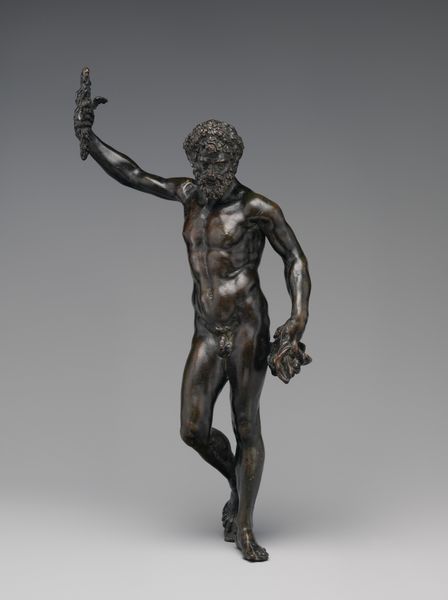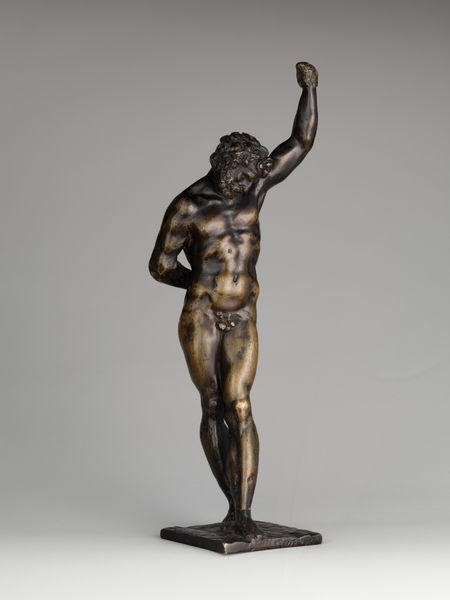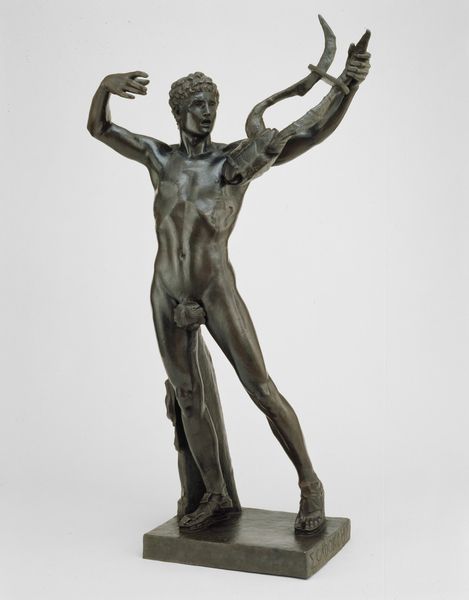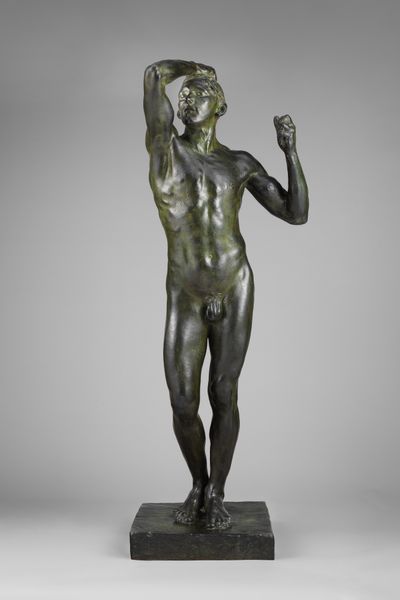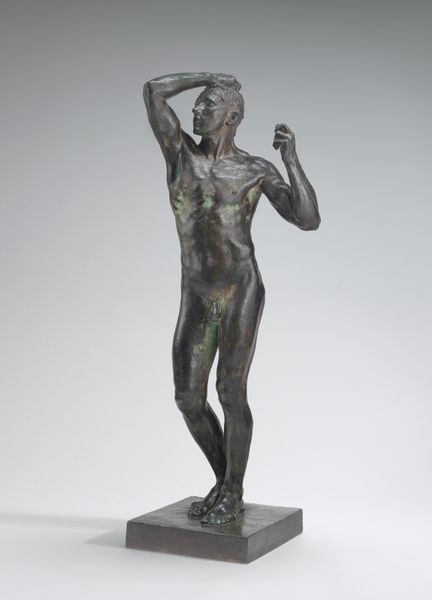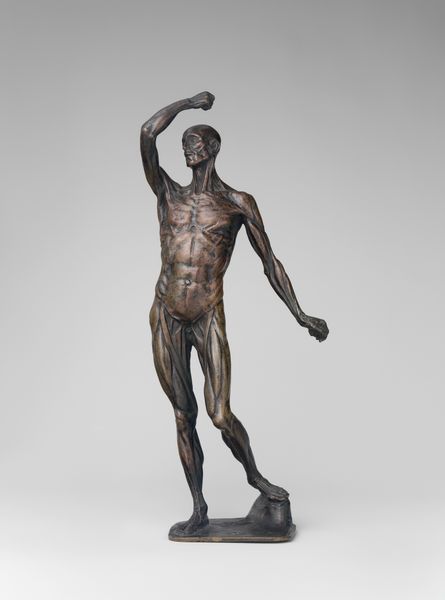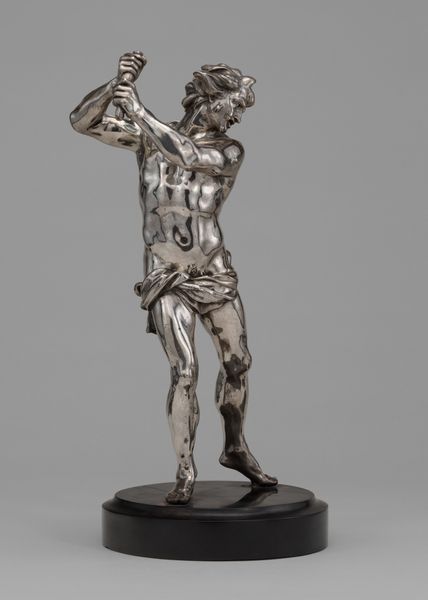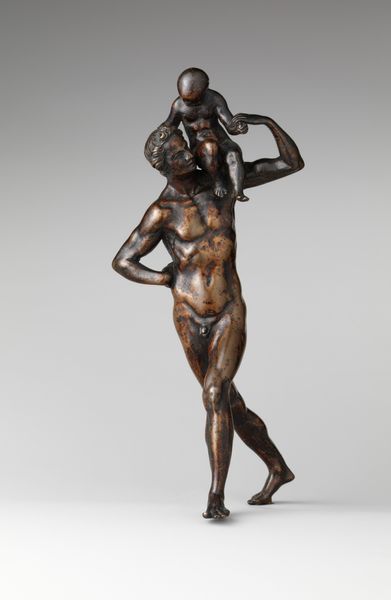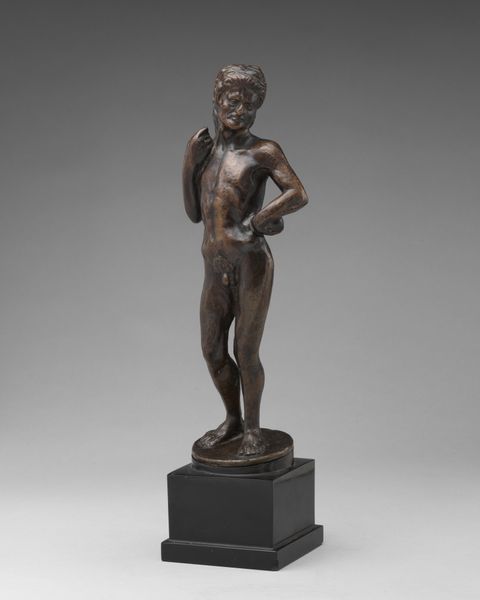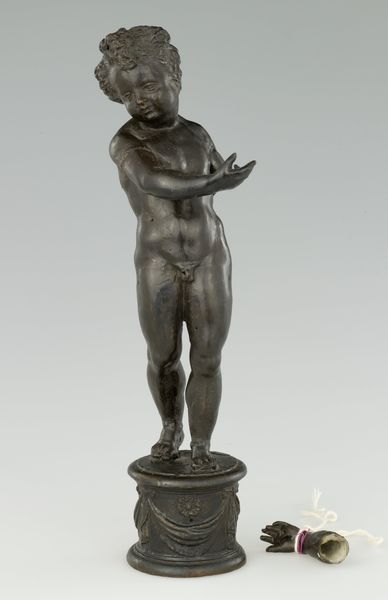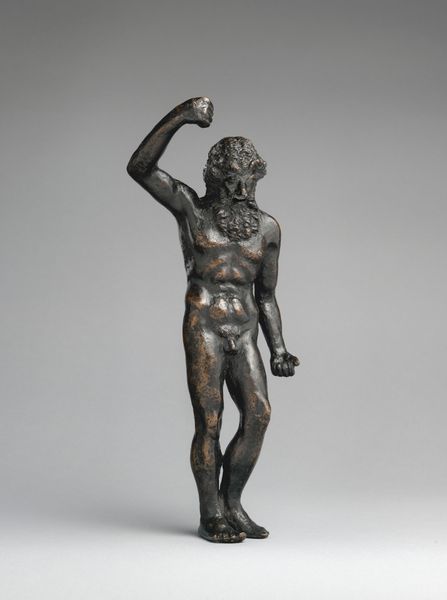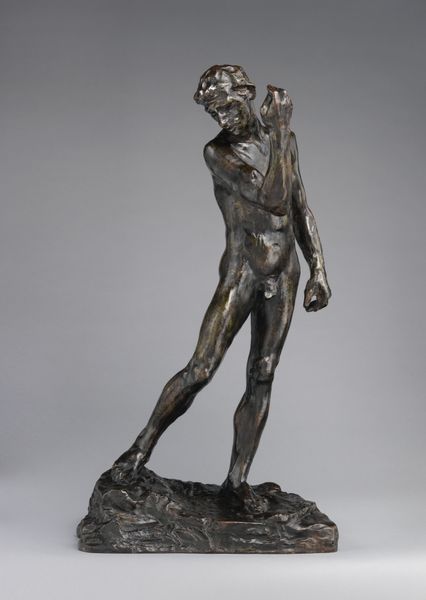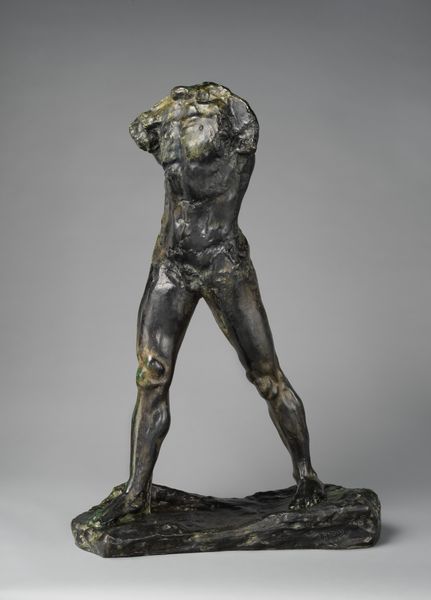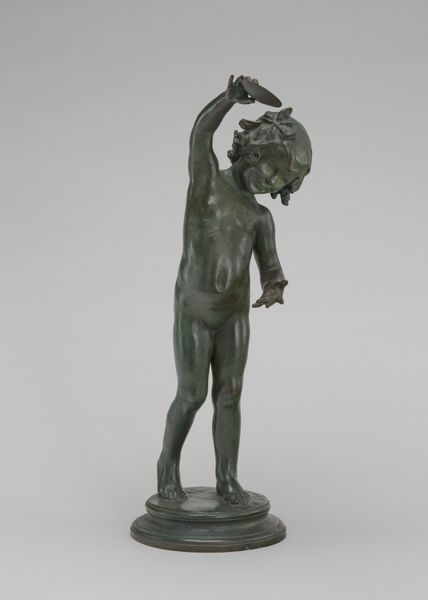
bronze, sculpture
#
bronze
#
mannerism
#
figuration
#
classicism
#
sculpture
#
history-painting
#
male-nude
Dimensions: Overall (confirmed): 18 3/4 × 10 5/8 × 7 1/2 in. (47.6 × 27 × 19.1 cm)
Copyright: Public Domain
Curator: This is Adriaen de Vries's "Apollo," a bronze sculpture crafted between 1589 and 1598. It's currently held here at the Metropolitan Museum of Art. Editor: There’s a fluidity to the form. The polished bronze almost makes Apollo seem like he's caught in a perpetual state of becoming, his extended arm and slightly contrapposto stance contributing to a very dynamic visual. Curator: Absolutely, and consider the method involved in its production. Bronze casting itself, especially at this scale, involved intense labor: the mining and smelting of the ore, the creation of the mold. Each step implies its own economic relations and labor practices worth unpacking. Editor: Right. Knowing that De Vries worked for powerful patrons such as Emperor Rudolf II adds layers of complexity. How might we contextualize this classical figure with the court's image, given that Apollo embodies ideals of beauty, reason, and order often associated with dominant power structures? Curator: Think also about the materiality, this bronze, and how its surface has changed over centuries of exposure and handling. The patina is itself a document of its reception, use, and place within collections. Editor: It’s impossible to ignore that classicism was frequently co-opted in ways that furthered exclusions based on race and gender. Can we, for example, confront how the aestheticized male nude intersects with historical and continuing power imbalances? Curator: His gaze…it's difficult to really tell what he's looking at, and what he's meant to represent for those in power, yes, and what kind of aesthetic standards were supported when making him and showing him to court members. It's useful for contemporary audiences to unpack these tensions. Editor: Agreed. Acknowledging the inherent contradictions and complexities allows viewers to engage critically with the artwork. It's a necessary component of how art history can speak to current societal issues. Curator: Indeed, exploring these factors not only broadens our understanding of "Apollo" as an artwork but reveals wider social and political undertones connected to art creation, patronage, and presentation. Editor: I appreciate how this deep dive unveils new layers, urging us to consider the complicated interplay between historical context, artistry, and today's critical lenses.
Comments
No comments
Be the first to comment and join the conversation on the ultimate creative platform.
